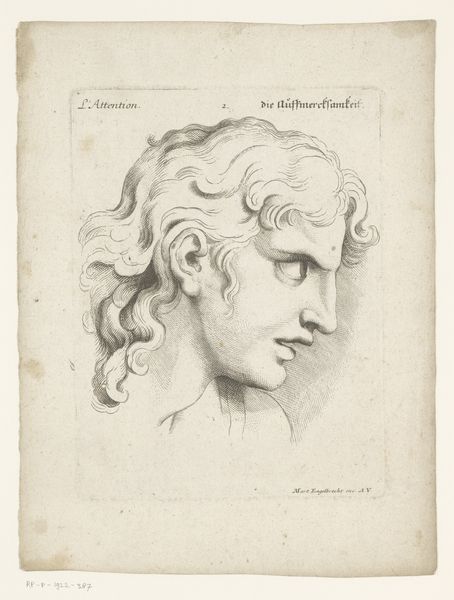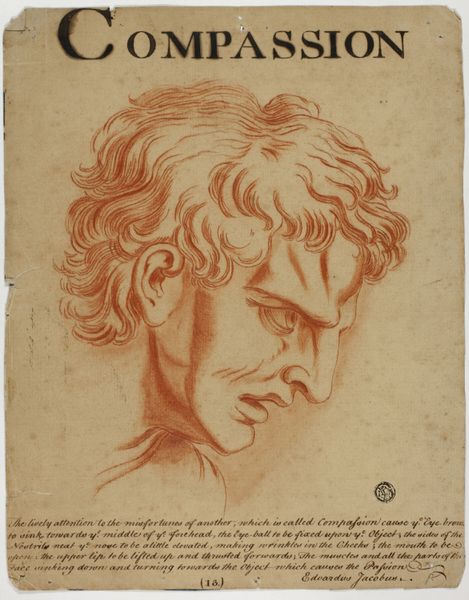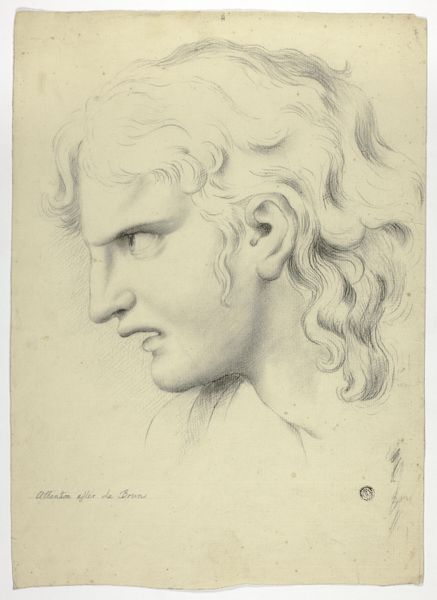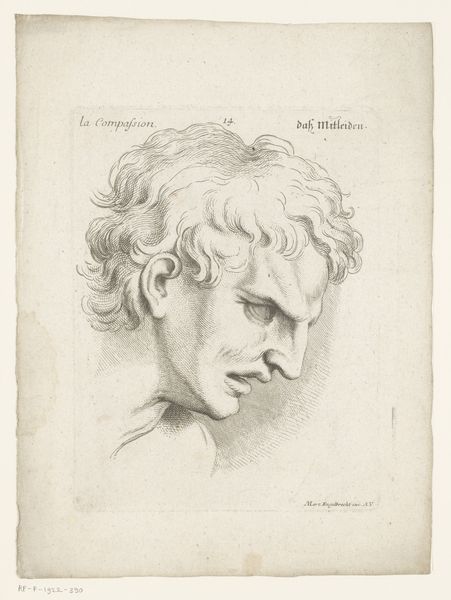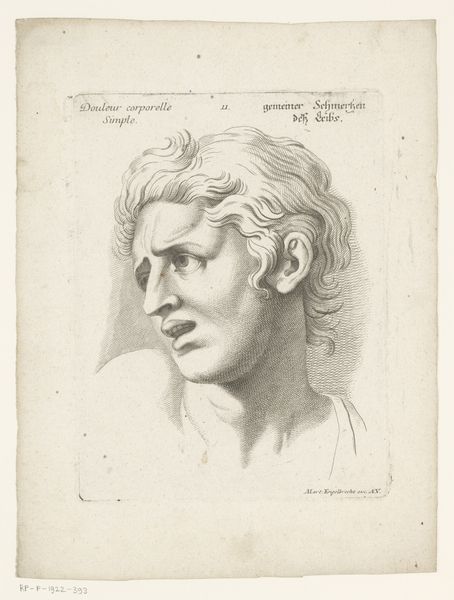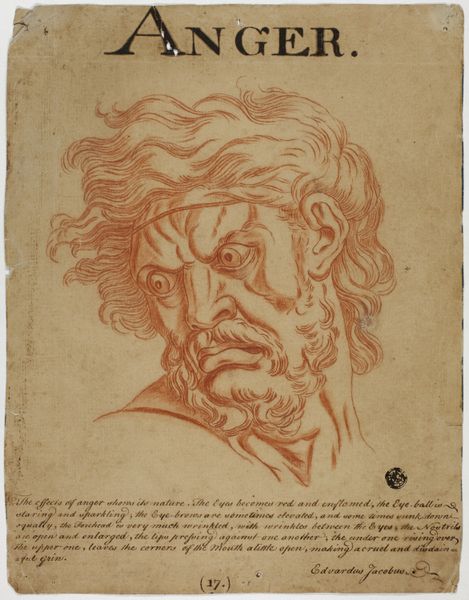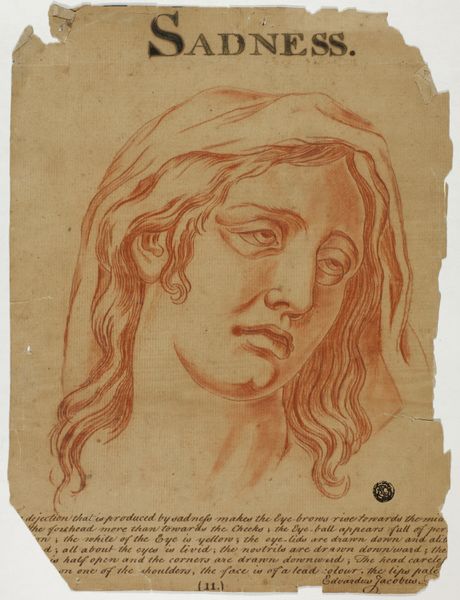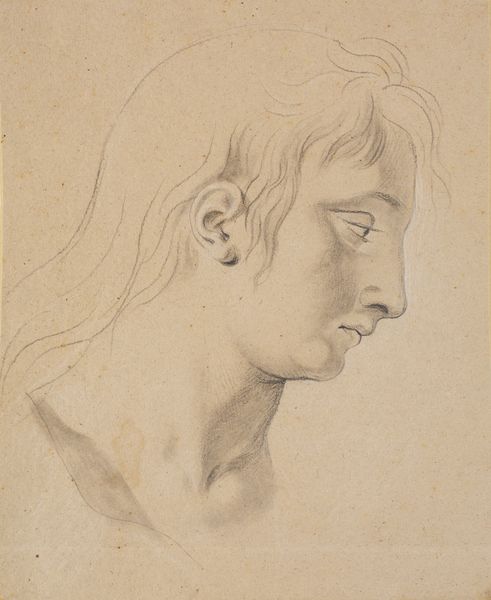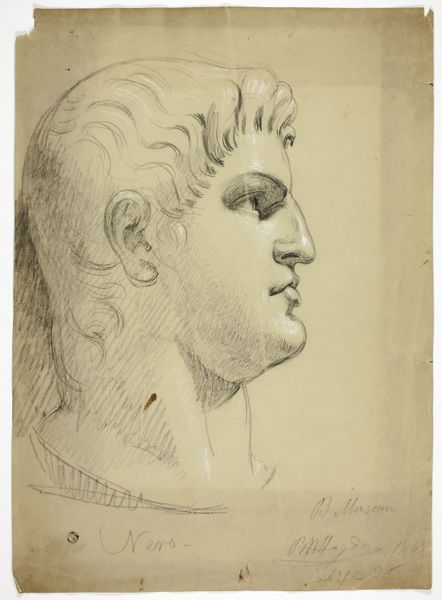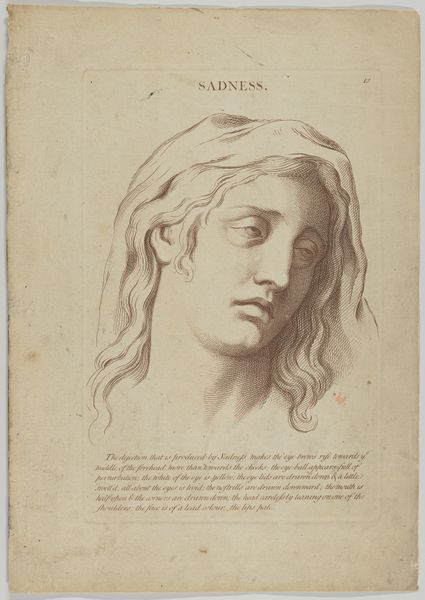
drawing, print, paper, chalk, graphite
#
portrait
#
drawing
#
narrative-art
# print
#
paper
#
form
#
chalk
#
line
#
graphite
#
academic-art
Dimensions: 283 × 215 mm
Copyright: Public Domain
Editor: So, this is Eduardus Jacobus's "Attention," a drawing made after 1698, mixing chalk, graphite, and ink on paper. There's something very classical about the figure, but the inscription underneath gives it a unique twist. What strikes you when you look at it? Curator: Immediately, I'm drawn to the way Jacobus merges the tradition of classical drawing with proto-scientific observation. It speaks volumes about the era's changing relationship with knowledge. How does the pursuit of objectivity influence artistic expression? Editor: So it's not just about capturing beauty but also dissecting a human expression? Curator: Precisely! It anticipates the Enlightenment's project of categorizing and understanding the human experience. But who gets to define and depict this experience? Is this an objective study, or a reflection of power structures that privilege certain bodies and expressions? What happens to the expressions of those deemed outside the norm? Editor: That’s a perspective I hadn't considered. I was focusing on the almost clinical description below. Curator: The text is crucial. It presents attention as a set of physical reactions, a mechanistic process. However, that presumed objectivity can also obscure the individual behind the expression. It also implies a controlled and learned attention. What kind of social dynamics do you think this enforced "attention" reflects? Editor: It’s fascinating how the artist is not just showing, but also telling us what 'attention' should look like. Now I see it pointing towards issues of control and the performance of attention. Curator: Exactly! By examining "Attention," we start questioning not only how we see art but how we understand and perform our own identities within a system. It becomes less about the face on the paper, and more about the structures shaping it.
Comments
No comments
Be the first to comment and join the conversation on the ultimate creative platform.
